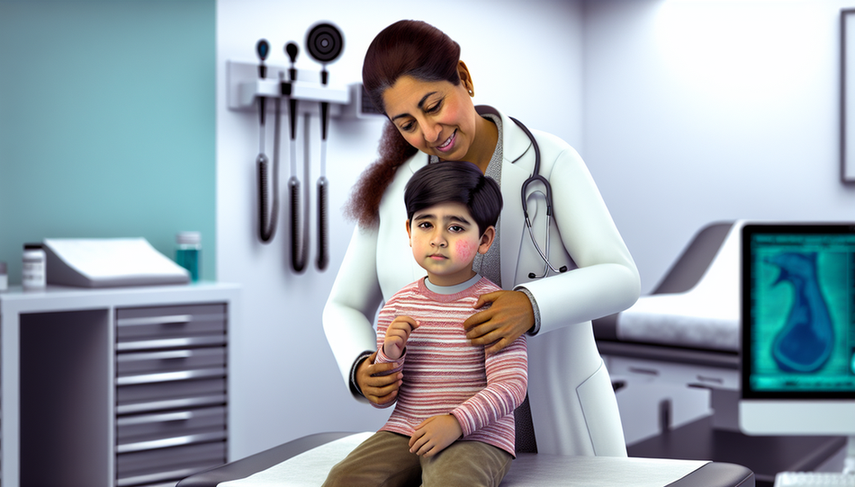Rubella Diagnosis in Pregnant Women: Retroauricular Lymphadenopathy, Rash, and Laboratory Tests for Congenital Infection

Rubella is an acute viral disease that, while generally mild, can have severe consequences if contracted during pregnancy, resulting in congenital rubella syndrome. The World Health Organization estimates that approximately 100,000 cases of this syndrome occur annually. Rubella is primarily transmitted through respiratory droplets and direct contact, and is characterized by fever, a generalized maculopapular rash, and lymphadenopathy, particularly in the occipital region [1].
Profundizando en el Diagnóstico
The clinical diagnosis of rubella is based on the identification of its characteristic signs, such as the rash and retroauricular lymphadenopathy. However, due to the similarity of its symptoms with other viral diseases, it is crucial to confirm the diagnosis through laboratory tests. The detection of specific IgM antibodies against the rubella virus is a commonly used method to confirm acute infection. Additionally, polymerase chain reaction (PCR) can be employed to detect the viral RNA, providing a more accurate confirmation [2].
In the context of epidemiological surveillance, it is essential to differentiate rubella from other infections that cause rash, such as measles and parvovirus B19. A recent study in Milan highlighted the importance of implementing differential diagnostic methods to improve the classification of clinically compatible cases [3]. This is particularly relevant in pregnant women, where rubella infection can have devastating consequences for the fetus, including congenital malformations [4].
Conclusiones
Accurate diagnosis of rubella is fundamental to prevent serious complications, especially in the context of congenital infection. The combination of clinical evaluation and laboratory tests, such as IgM detection and PCR, is essential to confirm the infection and differentiate it from other exanthematous diseases. Vaccination remains the cornerstone in the prevention of rubella and congenital rubella syndrome, and it is crucial to maintain high immunization rates to avoid future outbreaks.
Referencias
- [1] Rubella
- [2] Rubella (German measles) revisited
- [3] Differential diagnosis of fever and rash cases negative for measles and rubella to complement surveillance activities
- [4] Rubella and pregnancy: diagnosis, management and outcomes
Created 6/1/2025
